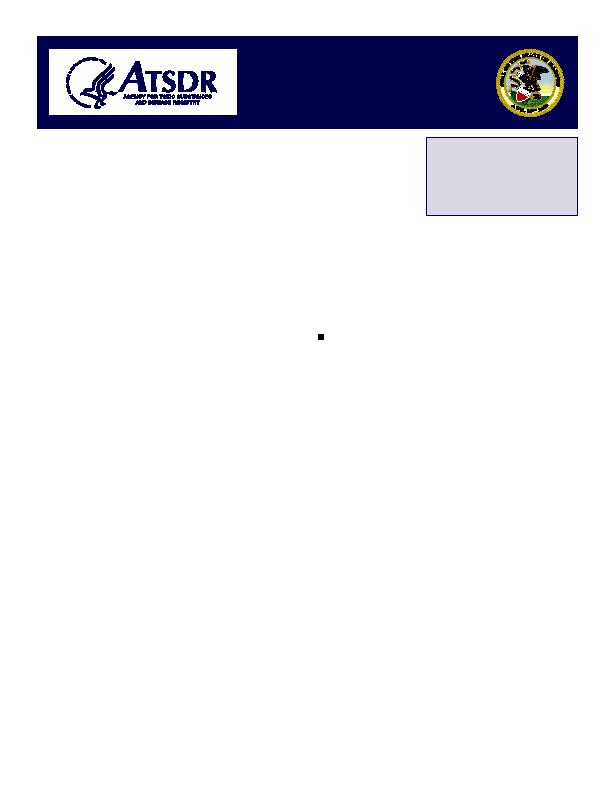
Activities in
Illinois
ATSDR in Partnership With Illinois
A public health
ATSDR awarded more
assessment
The Agency for Toxic Substances and Disease Regis-
than
||content||
.8 million in the last
is a written,
try (ATSDR) is the lead public health agency respon-
2 years in direct funds and
comprehensive
sible for implementing the health-related provisions
services to Illinois.
evaluation of
of the Comprehensive Environmental Response,
available data and
Compensation, and Liability Act of 1980 (CERCLA).
information about the release of hazardous substances
ATSDR is an Atlanta-based federal agency with more
into the environment in a specific geographic area.
than 400 employees and a budget for 2004 of approxi-
Such releases are assessed for current or future impact
mately million. ATSDR assesses the presence and
on public health. ATSDR, in collaboration with public
nature of health hazards at specific Superfund sites,
health and environmental officials from Illinois, has
helps to prevent or reduce further exposure and ill-
conducted 107 public health assessments in the state,
nesses resulting from those hazards, and expands the
including the following recent example.
knowledge base about the health effects of exposure to
Hartford Residential Vapor--In June 2003,
hazardous substances.
ATSDR released a final public health assessment
ATSDR works closely with state agencies to carry
prepared by the Illinois Department of Public
out its mission to serve the public by using the best
Health (IDPH) that evaluated residential vapor
science, taking responsive public health actions, and
intrusions in Hartford. In May 2002, volatile
providing trusted health information to prevent harm-
organic compounds (VOCs) entered the basements
ful exposures and disease related to toxic substances.
of several homes, causing acute health effects and
ATSDR provides funding and technical assistance to
forcing evacuations. Air samples showed very high
levels of VOCs, including benzene at six times the
ments and grants to identify and evaluate environ-
acute health guideline.
mental health threats to communities. These resources
The VOC source most likely is a layer of about
enable state and local health departments and other
2 million gallons of gasoline atop a shallow
grantees to further investigate environmental health
aquifer. The source of the gasoline was a pipeline
concerns and to educate communities. From fiscal
leak about 25 years ago. Interviews and surveys of
years 1988 through 2003, ATSDR awarded more
residents suggest that vapor intrusions have existed
than .4 million--more than
||content||
.8 million in the
in the northeastern portion of the community
last 2 years--in direct funds and services to Illinois
since 1966 but were worse in the late 1980s after
for comprehensive support of its environmental health
the pipeline leak. The refinery installed a vapor
unit. In addition to direct funds and services, ATSDR
extraction system in 1992, but homes affected
staff provides technical and administrative guidance
in 2002 were outside the treatment area of that
for state-conducted site activities.
system.
ATSDR Site-Specific Activities
The public health assessment concluded that these
Public Health Assessment-Related Activities
vapor intrusions do not pose a chronic health
hazard. Acute health hazards associated with these
One of the agency's important mandates is to conduct
acute exposure events are not predictable, and the
vapor intrusions are likely to recur. In this public
List (NPL) sites and of other sites where a significant
health assessment, recommendations were made to
threat to public health might exist. Fifty sites have
the agencies responding to the cleanup; no specific
been designated to the NPL in Illinois.



 Previous Page
Previous Page
